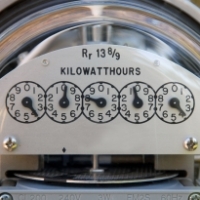Testing Smart Meters for Dummies

I recently had the opportunity to visit a smart meter laboratory and understand the complex dynamics behind the enormous amount of testing involved in any smart meter implementation.
A smart meter is an electronic device that records consumption of electric energy in intervals of an hour or less and communicates that information daily to the utility company for monitoring and billing purposes.
In their most simplified form, the small smart meter devices connect through varied communication protocols to a head end that collates all the data. The data is then transmitted through communication channels to a meter data management system, the primary purpose of which is validation and correction of the data, which then flows to the backend systems of billing, device management, and customer management. Below is a simplified architecture of a smart meter implementation:

Given the architecture, it is not a great surprise that 40 percent to 50 percent of the device maintenance effort is testing. Typically, the parts would be disparate systems from different vendors, which increases the complexity of testing.
Though the testing process is unique, the same basic testing imperatives apply for smart meters:
System acceptance testing of individual components: The testers still need to validate that each individual system—in this case, the meter data management system, head end, billing, and customer management—meet business requirements.
End-to-end integration testing: This involves validating business workflows across systems. One example is validating the integrations between the meters and the head end and the head end and the backend systems. Given the complex architecture, very little automation is possible. A good practice is to build a library of smart meter test cases.Examples of reusable test scenarios include billing, customer management, meter management, device management, security test cases, user authentication, and configuration tests.
Performance testing and stress testing: Testers must verify historical benchmarks in an end-to-end scenario for performance and peak load. Tests also include benchmarks for latency, bandwidth, and throughput. There are limited tools available from the vendor to generate volume data, so the test team must devise in-house tools or manual tests to support performance tests.
Industry testing: Industry tests involve testing data flow between the utility and a third party, such as an analytics product.
Security testing: As in any testing effort, the testers perform access control and user authentication tests.
Although smart meters are complex, specialized devices, the same essential testing principles can be utilized: a consistent, repeatable process aided by a predefined catalog of test types; a prebuilt library of test scenarios; a well-defined testing governance model for managing testing resources and assets; and an optimized estimation model. No matter what you are testing, remember these test process instruments.

